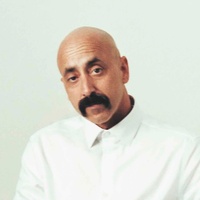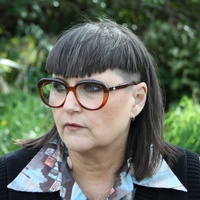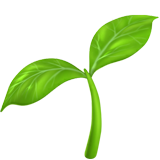On opening yourself up to chance
Prelude
Megan Rea (b.1993) is based in London, UK. She is currently studying for a Fine Arts MA at City and Guilds of London Art School following her BA at Edinburgh College of Art in 2016. In 2024, she opened her solo exhibition at Arusha in Edinburgh and her first solo exhibition in the US at Stellar Highway in New York. She has presented work in group exhibitions in London, France, Spain, Switzerland, and the USA.
Conversation
On opening yourself up to chance
Painter Megan Rea discusses repurposing failures, not striving for beauty, and working as an artist in the service industry.
As told to Jancie Creaney, 2542 words.
Tags: Art, Painting, Beginnings, Day jobs, Process, Inspiration, Education, Failure.
You received your BA in Painting from Edinburgh College of Art in 2016 and are now completing your MA. Was there a turning point when you thought that painting could be something that you pursued professionally?
There wasn’t necessarily a turning point as such. When I left uni, I moved home and started looking for jobs like everyone else. I found a part-time job and funded a studio with the money from that, and then I started applying for every opportunity I could find… I was quite young and didn’t know what I wanted, so I thought I might as well apply for whatever was out there. I was gradually invited to be in small shows, and that’s built up bit by bit over the years. Now I can be a little bit more specific as to what I think will suit my practice and what I want to be included in. I think it’s been one of those situations where you can’t plan it too much; you just have to work hard and have a sprinkling of luck. Now I’ve been painting for so long that it’s [like], this is where I am. I would love for my practice to be my main, full-time career and be supported just by that, but at the moment, it’s not. Hopefully in the future. That would be amazing.

Megan Rea, Flicker, oil on handmade paper on wooden mount 27.1cm x 45cm x 2.3cm, 2025
Before I started my MA, I was balancing being an art teacher and a studio assistant to another artist, and I was also an art technician. And I’ll probably go back to doing that… Well, I will have to, after the MA. It’s something that I do enjoy because it’s still in the art world and I’m making things and being creative. It’s just in a different style, a different way.
Did it feel important or intuitive to get part-time work that was in the realm of your interests?
Yeah. I mean, it did take a bit of a while. I did start in cafes and pubs—which, again, I think was actually a really great starting point. When you are in a monotonous job and you’re not really thinking—it’s instinct if somebody asks for a beer and you’re serving them; you’re doing a repeated action with every customer—your brain switches off and you’re in this nice state where you are thinking about your artwork. I would do lots of sketches whilst at work on the back of receipts and on little napkins and things, and that would fuel my ideas for when I got back into the studio.
But it has been really important. Especially working in the art school, there were lots of other artists who were teachers. So we’d have really important conversations on our lunch breaks, and help each other with artist statements or applications, or just small little discussions about the work that you’re doing at the moment. I think I just love making things, and so I wanted to be in an environment where things were being made, or where there were other people who loved the same things. It was great working in an artist studio because I could see how things worked on a larger scale when people “make it”—like how a big artist runs their studio, and they’re talking to the galleries, to contractors, to different specialists to help get this show together. So it was a nice behind-the-scenes exposure to how hopefully one day I can run my studio, if that manages to be a thing.
What initially really drew me to your work was the unconventional shapes of your canvases. Could you describe the path or steps that you think led to your current approach to painting?
I’d say the starting point was just after I graduated university. I won a scholarship to go to Florence for six weeks. It was called the John Kinross Scholarship, and it provided funding for students from Scottish art schools to go to Italy and choose their own subject to explore and investigate, or you could put it towards learning a new skill. I wanted funds to go towards looking at the architecture of Florence, because at the time I was really interested in gothic architecture and gargoyles and all things slightly medieval. I spent a lot of time sitting in squares, drawing the crenellations on the top of buildings. I visited a lot of the churches around Florence—I think there’s over 100, but I went to probably about 30—and I got really interested in looking at the frescoes on the walls. They were so old and so beautifully rich in color. The color had sustained after however many hundreds of years. The dry, stony texture was amazing. It didn’t look like it was painted on. It looked like it was part of the wall, like it was part of the building. I really wanted to recreate this aesthetic and texture.

Megan Rea, Hum, oil on handmade paper, 42 cm x 30 cm, 2025
There were also parts of the wall that were faded around a painting of such detail—of a face or a hand—and I liked the contrast of the two. I’ve always been interested in archeology, as well. I wanted to make something that looked like it was part of something larger. This idea of making a piece of work that looked like a fragment was exciting to me because it’s an opportunity to discover something else secret or hidden that is part of the painting that isn’t necessarily on view.
In one of your artist bios, you’ve described the process of making your own paper as being “reflective of the arduous preparation of Italian frescoes.” I wondered how you think about that preparatory phase—if the painting begins at this stage, for you.
I definitely think the start of my work begins with the paper. I’ve been thinking recently about how I can put more of myself and my work into this material. Originally, I started by blending pieces of unbleached newsprint, and that’s what I made the surfaces on. But recently, I started to blend up sketchbooks that I’ve used, and drawn in, and done preparatory sketches in. I feel like I’m putting myself into the material, and it’s quite a meditative process. It’s like there’s something really… personal isn’t the word. I don’t know what the phrase would be.
It’s like you have a relationship with the foundation of the work.
Yeah, exactly. Because obviously it feels very different to when you go out and buy some canvas and you fit it around a frame that’s been made by somebody else.
You’ve said that you prefer working on a larger scale as it allows you to be more expressive and work through mistakes. Do you still feel this way? Why do you think larger works allow for this?
Working larger is definitely more exciting for me. With the small pieces, I feel like you are naturally working in a more controlled way because your hand doesn’t need to travel as far across the page, and you don’t need to use your whole body to produce a mark or to fuel a movement. It’s a lot more controlled and considered. I really enjoy getting lost in a painting and trying to find my way out of it. A larger painting does provide the space to do that.
I’ve actually been thinking, over the MA, of different ways that I can introduce more chance into my practice. And that’s been making the work a lot more diverse and exciting to produce. I started to use metal scrapers because I was thinking about how I can make my work more archaeologically-based. I’m digging into the work and marking the paper, making indents. And it’s become a lot easier… No, it hasn’t become easier. There’s a lot less control with a scraper than there is with a paintbrush. I think this concept of chance is heightened for me because I’m trying to resolve the painting in a way that I don’t have to think about resolving the smaller work, I guess. The work is a lot braver and I feel a lot less restricted.

Megan Rea, She Sang And The Rest Was Silent, oil on handmade paper, 57cm x 88cm, 2025
When I think about the size of a painting, and how, like you said, it invites more opportunity to get lost in the work, I think about the length of time spent with a project. Does arduous preparation invite opportunities to get lost?
I find it a lot better to work without a time limit. That extends the opportunity to experiment and you can test out different ways of working, and push the limits of the paintings that you’ve been working on before. Is that what you mean?
I think so. I am interested in the idea of purposely getting lost in a work.
It’s a nice challenge. I feel like with the work that I used to make, or that I was making last year, I did sort of have an idea of what the painting was going to look like. It was very considered and measured, and I would do lots of drawings and prep, and draw it out onto the paper after I’d done the first few layers. Or almost scratch it into the paper so there was a bit of an indent, even after I’d layered some extra layers of paint. You could see where the outline of a fountain or a building was. But with these ones, I’m consciously not drawing anything out onto the surface. So it is a lot more thinking of ways to move through a work. Initially, I start by adding lots of layers of paint that don’t necessarily go together. And in doing so, I’m finding a way to navigate adding some extra paints, extra colors on top to create some sort of unifying bond on the surface of the painting.
Do you feel like you are rejecting that measured and considered way of working?
Definitely. I always have this feeling when, I don’t know, you stay in the studio for a while and you are working on something that you’ve planned, and then you visit a gallery, a new exhibition, and see something that ignites or sparks a new idea… I always want to go back and change what I’ve done slightly, to make it seem a little bit riskier. With a planned or controlled work, you do end up trying to make it look beautiful or really easy on the eye, and everything’s balanced and everything works together. After a while, I didn’t find that exciting anymore.
I guess I want to create a little bit of a challenge for myself, because I want to be learning from the work, and I want it to be giving me something that I find a little bit uncomfortable. I want to be using colors that don’t necessarily go together. I don’t want to make something that’s necessarily beautiful. I mean, I wouldn’t mind if it is considered beautiful by people, but that’s not the intention for me, to make a beautiful painting. Because I want it to look like a ruin or something that’s been found, like a found object, I want it to have a sense of imbalance. I don’t want it to be symmetrical or too predictable.

Megan Rea, Split Ground, oil on handmade paper, approx 42 x 30 cm, 2025
It does surprise me sometimes, as well. I’ve started scratching into the work, so the scalpel that I’m using picks up colors from old layers of paint as well. So occasionally, there are colors that are unearthed and they resurface, but depending on how thick the paint is, sometimes the color that you expect to reappear doesn’t. So it won’t be even across the surface of the paper; it’ll be kind of mottled or patchy. I think that brings a sense of unpredictability and chance, making something that isn’t expected or necessarily beautiful.
It’s such a paradox, to start out in pursuit of beauty, and then to realize you get more out of unpredictability or literally scraping and uncovering something you either rejected or forgot was there.
Exactly. It’s digging into the ground and finding something that you didn’t necessarily expect, just like people do with ruins and things from the past. When people go on archeological digs, it’s a bit of a surprise as to what’s underneath. I want that surprise from the work that I’m making. I want to be shocked and excited.
That ties into my last question: do you think there is such a thing as failure? Is there ever a time when you are working on something and you have to give up? Or does that not register as failure because it leads to something else?
I think I am quite content with failure. I don’t think it’s something that I necessarily think about as a bad thing. But when you are a painter, or an artist, or a creative in general, it’s extremely good luck or great luck if every painting that you make is a success. You have to be prepared for that failure, as a creative. Each failure that I have does provide something to learn from. It has definitely provided inspiration for my favorite pieces.
I mean, back to the scraping thing: I paint over paintings that aren’t working, and sometimes it is fortuitous, as it does bring up colors that I didn’t necessarily expect. Or if I’ve painted over a building, say—there could be a really nice curve, or an angle, or a ghost of a shape that is coming out from the painting that I’ve painted over. I think it does lend a lot of complexity and interest if there’s an echo of something that was painted underneath it. And I’m always excited to make a new piece after I’ve made a piece that was a failure, because even if it didn’t all go well, there’s normally something that I can take from that and transfer into my new painting.
One of the real benefits of working on blended paper is that I can just blend again a piece that hasn’t worked that well. I have torn up and blended a couple of pieces that I just couldn’t fix and weren’t working at all. And there’s small flecks of color, then, which is in the paint pot for the new piece. It still feels like I’m using the work, but in a different way, I guess. It’s still contributing to the next piece that I’m making in my series, or in my practice in general.
Megan Rea recommends:
Kawartha Dairy ice cream
Mixing orange and blue to make green
Going to Montenegro
Wearing block color socks
Working on the floor
- Name
- Megan Rea
- Vocation
- painter
Some Things
Pagination



